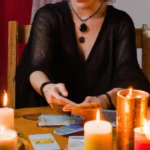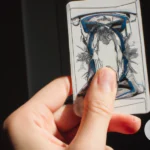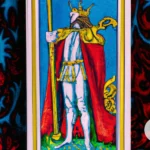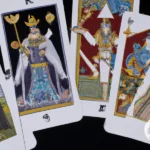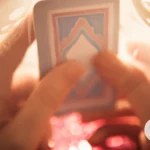As a tarot reader, the task of interpreting and understanding the meaning of court cards can be quite daunting. These cards, which typically represent people or personalities, add a layer of complexity to tarot readings. It’s easy to feel perplexed and overwhelmed when trying to memorize the meanings of all the different court cards. However, with the right techniques and regular practice, you can master the art of interpreting these cards and gain valuable insights into your tarot readings. In this article, we will explore five effective techniques for memorizing the meanings of court cards in tarot.
The Importance of Court Cards in Tarot
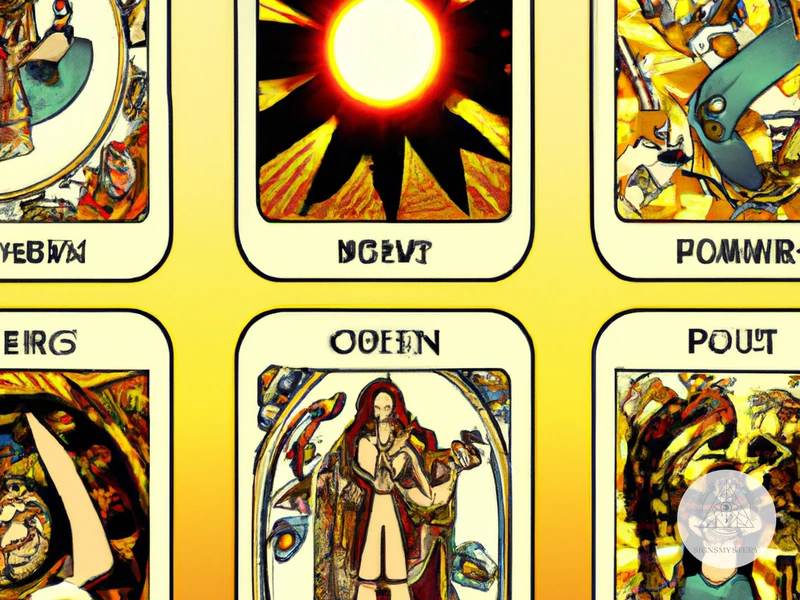
When delving into the realm of tarot, one can easily become absorbed in the complexities of the major and minor arcana. However, the court cards hold a significant role in tarot readings and should not be overlooked. These cards represent individuals or personalities, adding depth and nuance to any spread. It is essential to understand the meanings and traits of the court cards in order to accurately interpret a reading. Let’s explore the importance of court cards in tarot and uncover their role in shaping readings. To learn more about tarot court card traits, check out our comprehensive guide here.
Understanding the Different Types of Court Cards
Court cards in tarot represent various personalities and behavior patterns that can manifest in a reading. Understanding the different types of court cards is crucial in interpreting their meanings accurately. In tarot, there are four suits, which correspond to the four elements – Wands (Fire), Cups (Water), Swords (Air), and Pentacles (Earth). Each suit includes four court cards that represent different ranks – Page, Knight, Queen, and King.
Pages – Pages are associated with youth, learning, and communication. They symbolize new beginnings, curiosity, and exploration. They can also represent messengers, students, or apprentices. Pages usually emphasize the element of the suit they belong to. For example, the Page of Cups might represent the start of a new emotional journey, while the Page of Wands might symbolize new creative opportunities.
Knights – Knights represent action, energy, and progression. They symbolize a journey or quest towards a goal, as well as ambition and drive. They can also indicate a need for movement or change. Knights embody the element of the suit they belong to. For example, the Knight of Swords might indicate quick, intellectual action, while the Knight of Pentacles may imply a steady, methodical approach.
Queens – Queens represent nurturing, intuition, and receptivity. They symbolize the feminine aspects of a reading, including relationships, emotions, and compassion. They can also indicate a need for reflection or introspection. Like Pages and Knights, Queens emphasize the element of their respective suit. For example, the Queen of Cups may represent maternal instincts and emotional depth, while the Queen of Swords may signify keen perception and sharp intellect.
Kings – Kings represent leadership, authority, and stability. They symbolize masculine energy and the ability to take charge of a situation. They may indicate mastery and expertise as well as responsibility and accountability. Kings embody the element of their respective suit. For example, the King of Wands might represent confident leadership, while the King of Pentacles may signify financial stability and success.
Understanding the personalities and behavior patterns of each type of court card is essential for interpreting their meanings accurately in a tarot reading. Further knowledge on court cards can be found in resources such as tarot spreads that focus on court cards, the personality and behavior of court cards, title symbolism in court cards, relationship dynamics represented by court cards, and reading reversed court cards.
How Court Cards Influence Tarot Readings
The Court Cards in tarot deck represent people or personalities, and as such, they play a significant role in tarot readings. They are not only relevant in terms of the individuals they depict but also in the way they interact with other cards in the deck. Understanding their meaning and symbolism is crucial for interpreting readings accurately.
When interpreting tarot readings, the Court Cards can represent actual people in the individual’s life or aspects of the individual’s personality. This can include different characteristics, such as assertiveness, creativity, empathy, or detachment, depending on the card.
The Court Cards can also offer insight into the relationships between people. For example, if the Queen of Cups and the Knight of Swords appear together in a reading, the interpretation may suggest that the Queen’s emotional intelligence helps balance the Knight’s impulsive nature.
When the Court Cards appear in a reading, they often indicate a need for action or change. The type of card and its placement in the reading can signal what kind of action is necessary. For instance, the King of Pentacles in a career reading may suggest the need for a practical and responsible approach to financial matters.
The Court Cards can greatly influence tarot readings, providing insight into personalities, relationships, and actions that may be needed. It is crucial to understand their meanings and symbolism to conduct accurate and meaningful readings.
5 Techniques to Memorize Meanings of Court Cards
Mastering the meanings of court cards is often a daunting task for beginner and experienced tarot readers alike. With four court cards in each suit, and each card possessing its unique personality and symbolism, it can become overwhelming to remember all their meanings. However, fear not, as there are techniques that can help you memorize court card meanings with ease. In this section, we will explore five effective techniques that will help you commit the meanings of the court cards in tarot to memory. By using these techniques, you’ll be able to confidently read the court cards in any tarot spread.
1. Assign a Personal Meaning to Each Card
One effective technique for memorizing the meanings of court cards in Tarot is to assign a personal meaning to each card. This involves relating the characteristics and symbols of each card to your own experiences and understanding, which can make the meanings more relatable and easier to remember.
Here are some steps to follow when assigning personal meanings to court cards:
- Study the court card and its symbolic elements: Before assigning a personal meaning to a court card, it is important to understand the traditional meanings and symbolism associated with the card. This can be done by studying Tarot books or websites, or by working with a knowledgeable Tarot reader.
- Reflect on the card’s potential meanings: Consider how the card’s symbols and characteristics might relate to your own life experiences or current situations. For example, if the Knight of Swords represents quick thinking and swift action, think about times when you have had to act quickly or make important decisions under pressure.
- Choose a personal meaning that resonates with you: Based on your reflections, choose a meaning for the card that feels personally meaningful and relevant. This might be a phrase or keyword that captures the essence of the card, or a more detailed interpretation that relates to your specific situation.
- Write down your personal meanings: To solidify your understanding of each court card, write down the personal meaning you have assigned to it. This can be in the form of a keyword, phrase or paragraph, and can include any personal associations or insights you have about the card.
By assigning personal meanings to each court card, you can create a more personalized connection with the cards and their meanings, making them easier to recall and interpret in readings. Additionally, your personal meanings may differ from traditional meanings, allowing for a more intuitive and unique interpretation of the cards.
2. Use Mnemonics and Visualizations
One effective technique for memorizing the meanings of court cards in Tarot is to use mnemonics and visualizations. Mnemonics are memory aids that help us associate information with something else, making it easier to recall later on. Visualizations, on the other hand, use mental images to make concepts more concrete and vivid.
Here are some ways to use mnemonics and visualizations:
- Create acronyms or phrases: Create a memorable acronym or phrase using the first letter of each court card. For example, for the Wands suit, the acronym “KFCP” can be used to represent each card (King, Queen, Knight, Page). You can then create a phrase or sentence to help you remember the meanings of each card, such as “Kingdom Fortitude Can Prevail” for the Wands suit.
- Associate the cards with objects or people: Another way to use visualizations is to associate each court card with an object or person that represents its meaning. For example, the King of Cups can be represented by a cup overflowing with water, while the Queen of Swords can be represented by a sharp sword. This mental image can help you remember the traits and characteristics of each card.
- Create a story: Visualization can also be used to create a story or narrative that incorporates each court card. You can imagine a scenario where each card plays a role in the story, and use this to remember their meanings. For example, you can imagine the King of Pentacles as a wealthy businessman who is visited by the Queen of Cups seeking financial advice.
By using mnemonics and visualizations, you can create memorable associations that help you remember the meanings of each court card in Tarot. These techniques can be especially useful for those who are new to Tarot or struggle with memorization.
3. Create Stories and Narratives
One effective technique for memorizing the meanings of court cards in tarot is by creating stories and narratives around each card. This method allows you to connect with the images on a deeper level while also making the memorization process more enjoyable. Here are some steps to follow when using this technique:
- Step 1: Choose a court card that you want to memorize and study the image closely. Look at all the details, colors, symbols, and expressions on the card. Imagine that you are stepping into the scene and experiencing it firsthand.
- Step 2: Use your imagination to create a story or narrative around the card. This story should be based on the card’s traditional meaning, but can also include your own personal interpretations and associations. For example, if you are working with the Queen of Swords, you might imagine that she is a wise and independent woman who has just overcome a major obstacle in her life.
- Step 3: Visualize the story in as much detail as possible. Try to engage all of your senses and emotions while picturing the scene. This will help you remember the card’s meaning in a more vivid and memorable way.
- Step 4: Repeat the story to yourself several times while looking at the card. You can also record yourself telling the story and listen to it later. This will help you internalize the card’s meaning and remember it more easily in the future.
- Step 5: Practice using the card in tarot readings and see how it fits into different situations. This will deepen your understanding of the card and help you discover new aspects of its meaning.
Creating stories and narratives is a fun and effective way to memorize the meanings of court cards in tarot. By using your imagination and engaging with the cards on a deeper level, you can unlock new insights and connections that will enhance your tarot practice.
4. Use Correspondences and Associations
Another effective technique to memorize meanings of Court Cards in Tarot is by using correspondences and associations. This technique involves linking the cards to other elements, such as astrology, numerology, colors, and elements, to create a deeper understanding of their meanings.
One way to use correspondences is to create an html table that displays the various associations for each of the Court Cards. Here is an example table for the Swords suit:
| Card | Astrological Association | Numerological Association | Color Association | Elemental Association |
|---|---|---|---|---|
| Page of Swords | Libra | 11 | Yellow | Air |
| Knight of Swords | Gemini | 12 | Orange | Air |
| Queen of Swords | Virgo | 13 | Light blue | Air |
| King of Swords | Aquarius | 14 | Dark blue | Air |
By creating a table like this, you can easily see the correspondences for each card in the Swords suit, which can help you remember their meanings. For example, if you know that the Page of Swords is associated with the astrological sign of Libra, you can use that information to help you remember that this card is about balance, harmony, and diplomacy.
Another way to use correspondences is to create associations between the Court Cards and real-life situations or people you know. For example, you might associate the Queen of Pentacles with your grandmother, who is nurturing, practical, and down-to-earth. This can help you remember that the Queen of Pentacles is a card about abundance, stability, and security.
Using correspondences and associations can be a powerful tool for memorizing the meanings of Court Cards in Tarot. By linking the cards to other elements and creating meaningful associations, you can deepen your understanding of the cards and improve your ability to read them in a Tarot spread.
5. Practice Regularly with Court Cards
One effective way to memorize court card meanings in tarot is practicing regularly with the cards. This involves spending time with court cards every day and familiarizing yourself with their different attributes and interpretations.
Here are some ways to incorporate regular practice into your court card memorization routine:
| Technique | Description |
|---|---|
| Draw a Card of the Day | Every morning, randomly select a court card from your deck and spend time examining it. ThinkSubscribe to Our NewsletterSign up to receive the latest news and updates. |
| Shuffle and Identify | Shuffle your deck and pull out one or more court cards at random. Without looking at the guidebook, try to identify the cards based on their cues and symbolism. Test yourself regularly to see how many cards you can identify correctly. |
| Journal Your Impressions | After spending time with a court card, write down your impressions and interpretations in a journal. This can help solidify your understanding of the card’s meaning and give you a reference to look back on during future readings. |
| Use Court Cards in Readings | As you become more comfortable with court cards, incorporate them into your tarot readings. Don’t be afraid to challenge yourself by using only court cards in a spread or tackling more complex interpretations that involve multiple court cards. |
By practicing with court cards regularly, you’ll become more confident in your ability to interpret these complex cards and incorporate them into your readings with ease. Remember to be patient with yourself and celebrate your progress along the way.
Additional Tips for Learning Court Card Meanings
As we delve further into the world of tarot and its court cards, we may find ourselves struggling to remember the intricate meanings and personalities of each card. It’s important to note that mastery of these cards cannot be achieved overnight, and constant practice and dedication is necessary. However, there are additional tips and tactics that can aid in the process of memorization and understanding. Let us explore some helpful strategies that can assist in solidifying our knowledge of court card meanings.
Work with One Suit at a Time
When practicing with court cards in Tarot, it is important to focus on one suit at a time. This allows for a deeper understanding of the individual cards and their meanings. Working with one suit at a time also helps to avoid confusion between the different types of court cards.
Start by selecting a suit of your choice and familiarizing yourself with the characteristics of each card in that suit. Practice memorizing the names and meanings of the court cards within that suit using the techniques mentioned earlier in the article, such as assigning personal meanings and creating narratives.
Once you feel confident with the first suit, move on to the next one. This gradual approach allows you to fully absorb and retain the information without feeling overwhelmed by the number of cards you need to memorize.
Devoting time to each suit separately also allows you to appreciate the unique energy of each suit and the court cards within it. For example, the Cups suit represents emotions and relationships, while the Swords suit denotes intellectualism and conflicts.
By working through each suit one at a time, you can strengthen your knowledge and understanding of the court cards in Tarot. Take your time and enjoy the learning process, as it can be a rewarding journey towards becoming a proficient Tarot reader.
Relate the Cards to Real-life Situations
One effective technique for memorizing the meanings of court cards is to relate them to real-life situations. By connecting the cards to scenarios and people that we encounter in our daily lives, we can better understand and retain their meanings.
Here are some ways to relate court cards to real-life situations:
- Think of people you know: Consider the personalities, behaviors, and traits of people in your life that align with the different court cards. For example, if you know someone who is authoritative, confident, and takes charge, they may embody the traits of the King of Wands.
- Consider your own experiences: Reflect on instances in your life where you may have acted or felt like a particular court card. For example, if you recently took on a leadership role and had to make difficult decisions, that could align with the energy of the Queen of Swords.
- Use current events: Look to current events and news stories to find examples of court card energies at play. For instance, a world leader enacting swift and forceful action could be seen as embodying the energy of the Knight of Swords.
- Explore pop culture references: Consider how certain characters in movies, TV shows, or books could be connected to the different court cards. For instance, a character like Cersei Lannister from “Game of Thrones” may embody the energy of the Queen of Cups, as she is deeply emotional and protective of her family.
Relating court cards to real-life situations helps to create a more tangible and relatable understanding of their meanings. This technique can also make the process of memorizing the cards feel less daunting and more enjoyable.
Join Tarot Study Groups and Communities
One of the most effective ways to improve your understanding and interpretation of court cards in Tarot is to join Tarot study groups and communities. These groups provide a supportive environment where you can share your experiences, ask questions, and receive feedback from other Tarot enthusiasts. Here are some benefits of joining Tarot study groups and communities:
| Benefits of Joining Tarot Study Groups and Communities: |
|---|
| 1. Exposure to Different Perspectives: When you join a Tarot study group, you have the opportunity to learn from other members who have different backgrounds, experiences, and approaches to Tarot. This exposure to diverse perspectives can help you broaden your understanding of court cards and Tarot in general. |
| 2. Accountability: Joining a Tarot study group can help keep you accountable for your learning and growth. When you commit to attending regular meetings and sharing your progress with others, you’re more likely to stay motivated and consistent in your practice. |
| 3. Support and Feedback: Tarot study groups provide a supportive environment where you can receive feedback on your readings, interpretations, and techniques. This can help you refine your skills and gain confidence in your abilities. |
| 4. Access to Resources: Tarot study groups often have a wealth of resources that you can access, such as books, articles, and websites. This can help you deepen your knowledge and understanding of court cards and Tarot in general. |
| 5. Community: Joining a Tarot study group can help you connect with like-minded individuals who share your interest and passion for Tarot. This sense of community can provide emotional support and encouragement on your Tarot journey. |
In addition to the benefits listed above, Tarot study groups and communities can also provide a space for you to practice your skills and receive feedback in a non-judgmental and supportive environment. Whether you’re a beginner or an experienced Tarot reader, joining a study group can help you enhance your knowledge and understanding of court cards in Tarot.
Conclusion
In conclusion, memorizing the meanings of court cards in Tarot can be a challenging task, but with practice and dedication, it is definitely achievable. It is important to understand the different types of court cards and their influence on Tarot readings. By assigning personal meanings to each card, using mnemonics and visualizations, creating stories and narratives, and using correspondences and associations, one can develop a strong understanding of the court cards.
Continual practice and regular use of court cards is also crucial in solidifying their meanings in one’s memory. Working with one suit at a time and relating the cards to real-life situations can also aid in memorization. Joining Tarot study groups and communities can provide a supportive environment for learning and sharing knowledge about court cards.
Remember, the key to memorizing court card meanings is not just rote memorization, but also understanding the symbolism and context within the Tarot deck. By utilizing the techniques discussed in this article and staying committed to consistent practice, anyone can become proficient in interpreting and understanding the meanings of court cards in Tarot. Happy learning and may your Tarot journey be full of insightful readings and meaningful connections with the cards.
Frequently Asked Questions
What are court cards in Tarot?
Court cards are a type of Tarot card that represent different personality types or energies.
How many court cards are there in a Tarot deck?
There are 16 court cards in a Tarot deck, four for each of the four suits.
What is the significance of court cards in Tarot readings?
Court cards can represent people, situations, or energies that are relevant to the question or issue being explored in the reading.
Why are court cards often considered challenging to interpret?
Court cards are more complex than other Tarot cards because they can represent multiple meanings and have different levels of energy based on their position in the reading.
What is the best way to start memorizing court card meanings?
Start by assigning a personal meaning to each card that resonates with you and your experiences.
How can mnemonics and visualizations help with memorizing court card meanings?
Mnemonics and visualizations can help make the meanings of court cards more memorable by creating concrete associations between the cards, their meanings, and real-life experiences.
What are some examples of associations that can be used to memorize court card meanings?
Associations can include elemental correspondences, personality traits, physical appearances, and specific situations or events.
Why is regular practice important for memorizing court card meanings?
Regular practice helps reinforce the meanings of court cards in your memory and makes them easier to recall during readings.
How can relating the cards to real-life situations help with memorization?
Relating the cards to real-life situations helps make the meanings of court cards more relevant and applicable, making them easier to remember.
What are the benefits of joining a Tarot study group or community?
Joining a Tarot study group or community can provide support, resources, and opportunities to practice and enhance your understanding of Tarot, including court card meanings.



